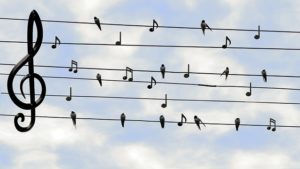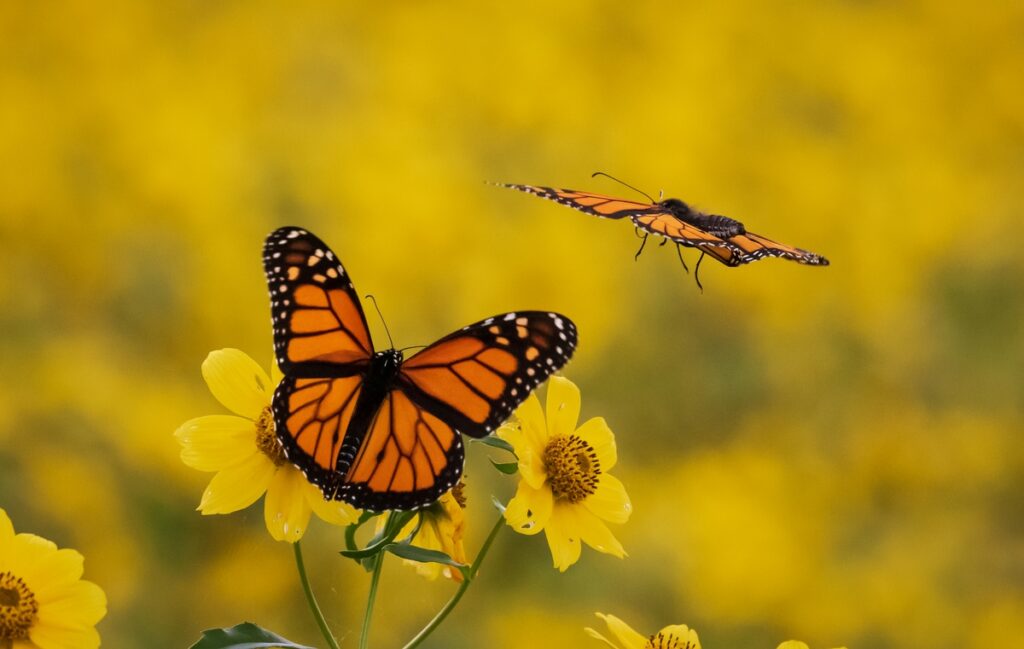
Top 6 Native Mojave Plants To Make Your Home a Bird-and Pollinator-friendly
It might be hard to believe with all the cloudy days (and snow!) we’ve been getting, but spring is just around the corner, and there’s no better way to celebrate spring than getting your hands in some dirt. Want to make your garden even more rooted in our landscape and make it bird-and pollinator-friendly? Read on to learn more about native plants in the Mojave Desert!
Why Plant Native?
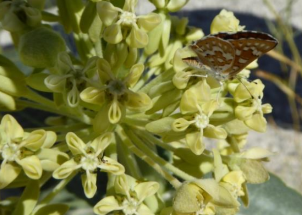
Our native plants are the perfect choice for gardening in drought. Once established, they can live on just 4-5 inches of rain a year in the wild, requiring minimal watering in your garden.
Native plants have evolved to grow in a specific ecosystem, so for us in Las Vegas, these are plants that we find growing in the Mojave Desert. They are expertly adapted to our climate, from searing summers to dry, salty soil. In addition, our native wildlife has adapted alongside Mojave plants for millions of years, so by planting native, you can make your garden more inviting to birds and pollinators.
When shopping for plants, check to see what their native range is and find out whether or not they grow in the wild Mojave Desert or even our neighboring Sonoran Desert. This ensures that you’re selecting a plant to meet our climate conditions. Still unsure? Here are some plant recommendations!
Top 6 Native Mojave Plants
1. Desert Sunflower
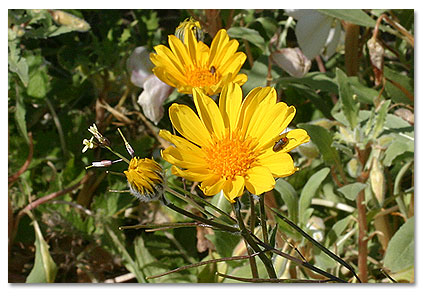
Who doesn’t love a good sunflower? The Mojave Desert has its own special sunflower, the desert sunflower.
An emblem of gardens across the United States, sunflowers attract seed-eating birds like house finches, lesser goldfinches, mourning doves, dark-eyed juncos, and white-crowned sparrows. They grow tall quickly and have bright golden blooms in the spring and fall.
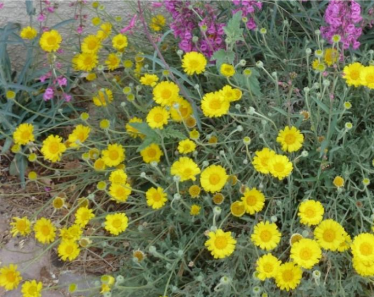
2. Desert Marigold
A type of daisy, the desert marigold, is a low-lying flower that grows well in the full sun and dry soil.
Like the Desert Sunflower, they bloom bright yellow in the spring and fall, attracting seed-eating birds like finches and sparrows. The desert marigold is also rich in nectar and attracts bees and checkerspot butterflies.
According to Red Rock Audubon, this perennial herbaceous plant flowers from March to September and grows to be eight to 20 inches tall.
3. Milkweed
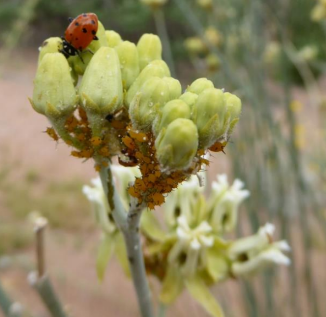
If you want butterflies dancing through your garden, consider planting native rush or showy milkweed to attract monarchs.
Showy milkweed has pink spiky flowers and blooms from May to September. Rush milkweed has cream-colored flowers that bloom from April to December.
Both milkweeds are a favorite of the monarch and striated queen butterflies because they lay their eggs on the leaves and eat them as caterpillars. You may also see beetles and bees visit the milkweed flowers for nectar.
4. Penstemon
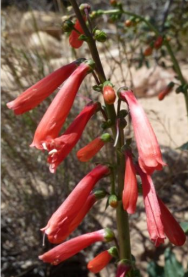
To invite hummingbirds into your garden, consider planting penstemons. The long stalks of tubular flowers are nectar-rich and attract hummingbirds and even hummingbird hawk moths. This extraordinary moth pollinates plants with its long proboscis, hence the “hummingbird” in its name.
According to Red Rock Audubon, this perennial herbaceous plant flowers from May to July and can be grown to be one to three feet high.
Your penstemon options vary depending on your color preference. If you want something fiery that’s a hummingbird favorite, consider the Firecracker Penstemon with its bright red flowers (pictured left). If you want something a little more subdued, Palmer’s Penstemon has soft lavender flowers. Finally, for a splash of bright pink, consider planting Parry’s Penstemon.
5. Creosote
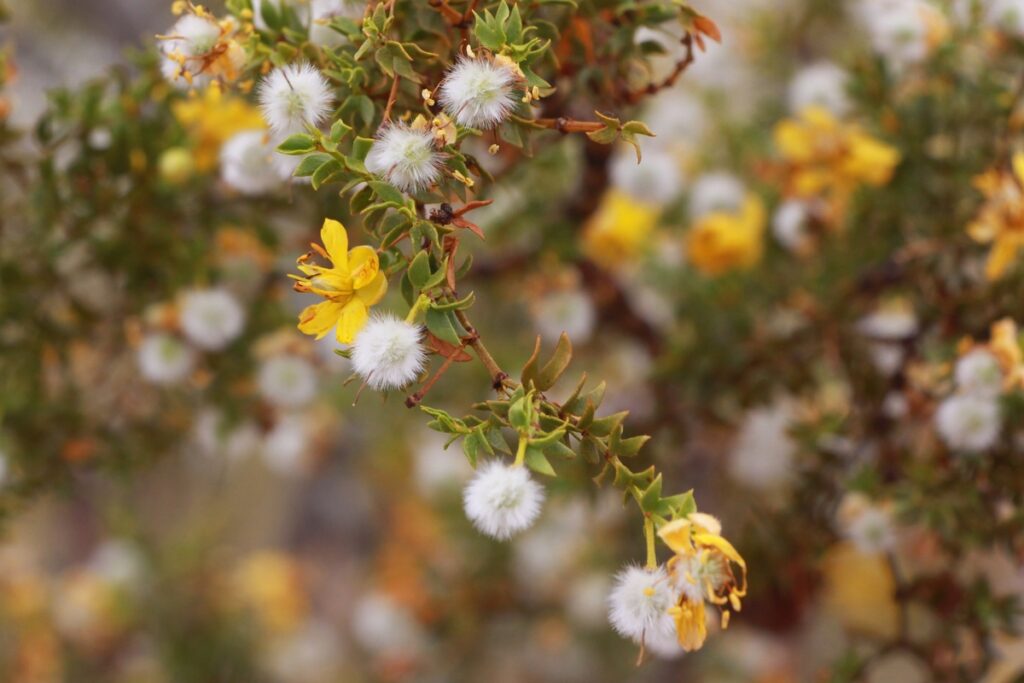
Creosote is the most iconic plant in the Mojave Desert. You’re probably familiar with creosote, even if you don’t know it by name. It’s the bush that passes by in a blur of green and brown when you’re driving on the freeway, or perhaps you’ve seen it in desert lots in the city. Its leaves also smell like rainwater!
Far from being a raggedy shrub, creosote is a verdant bush that blooms with yellow flowers in the springtime, which turn into little fuzzy white pom-poms after they bloom. Creosote will attract native bees and small insect-eating birds like verdins and gnatcatchers.
It’s incredibly drought-tolerant and hardy, and one of the oldest plants in the world is a creosote called King Clone, that’s 11,700 years old! But don’t worry; you’re not expected to keep your creosote alive for quite that long.
6. Brittlebush
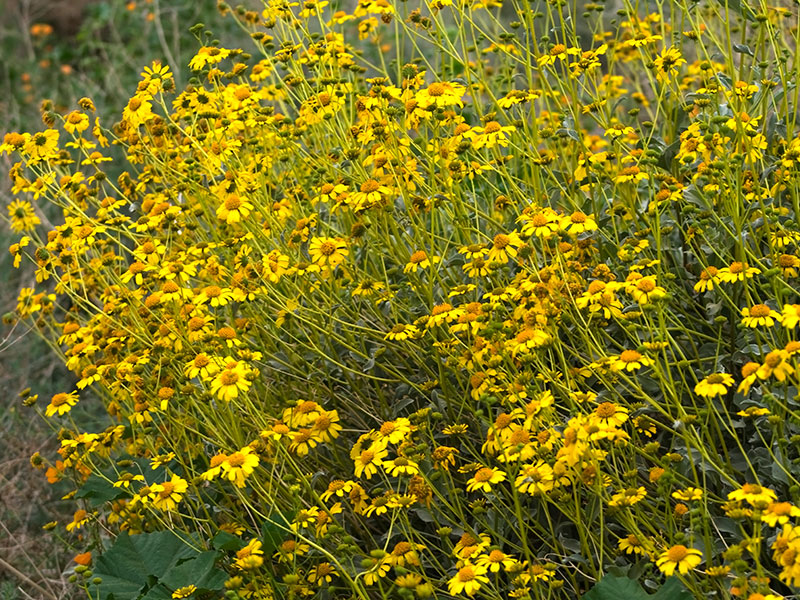
Brittlebush is another fantastic shrub to fill out your garden space. In the springtime, it blooms bright yellow and attracts many butterflies, bees, and small beetles. It has a long flowering season and does well in dry, salty soil.
Lesser goldfinches, house finches, white-crowned sparrows, and other seed-eating birds are attracted to its seeds in the fall. This plant has long, fuzzy leaves that are soft to the touch and will add a silver-green sheen to your garden space.
(Article continues after the ad)
Please follow our fantastic site sponsors! They make content like this possible! 🙂
Where to Buy Native Mojave Plants
Now you have a few plant ideas and are ready to add them to your garden. Now what? Finding native Mojave plants in the Las Vegas Valley poses a bit of a challenge, and many commercial nurseries don’t sell native plants yet. However, you can call Star Nursery or Moon Valley Nursery and see if they have any plants on this list. Chances are, they at least have creosote.
Another option is to call the Clark County Master Gardener program at the University of NV Cooperative Extension office. They can sometimes provide seeds or seedlings of these native plants. Note that starting these plants from seed is difficult because desert plants have a long germination period, so finding seedlings is the best way to start your native plants garden. The Special Projects Nursery is also a great place to buy locally grown seedlings at a low price. Call both places to check their hours and plant stock before driving out.
Two Other Ways to Make Your Yard Wildlife-Friendly
Maybe you don’t have much yard space for plants or can’t find native plants at your local nursery. What do you do? Fortunately, there are many ways to make your garden bird and pollinator-friendly without native plants.
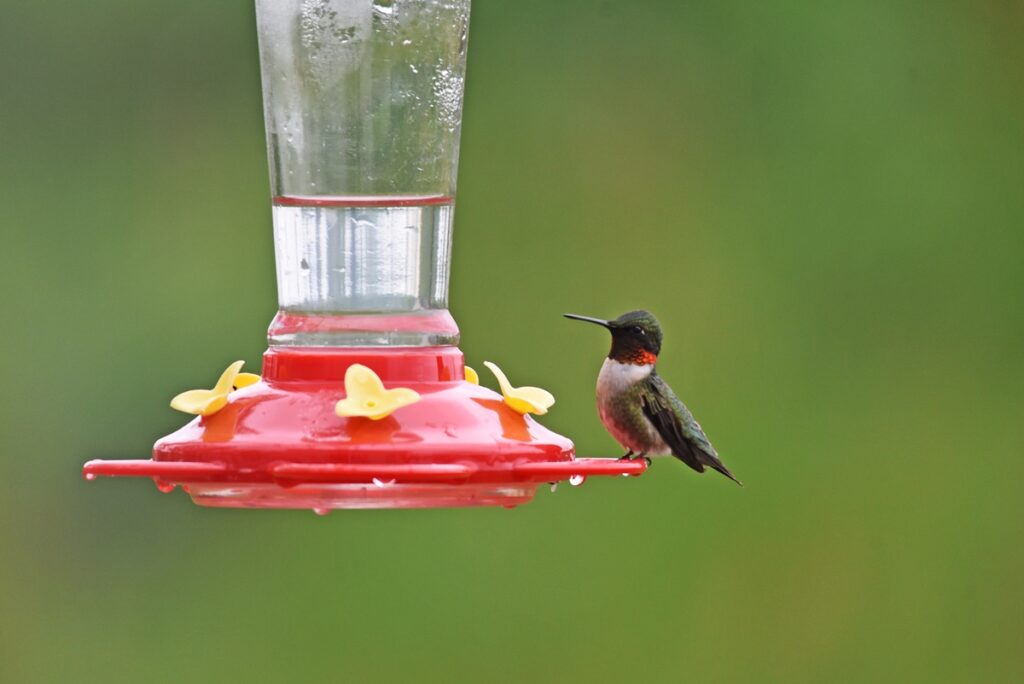
Set Up Hummingbird Feeders
Even if you don’t have any plants in your yard, you can attract hummingbirds by putting up a hummingbird feeder. You can buy a hummingbird feeder at Target, Walmart, a home improvement store, or a garden nursery.
The best recipe for hummingbird nectar is to boil ¼ cup of refined white sugar to 1 cup of water. Make sure you clean your hummingbird feeder frequently (at least once a day in the summer) to prevent any diseases or fungus from getting your local hummingbirds sick.
In addition, you may see other wildlife at your hummingbird feeders, like verdins or bees drinking.
Put Out a Water Dish
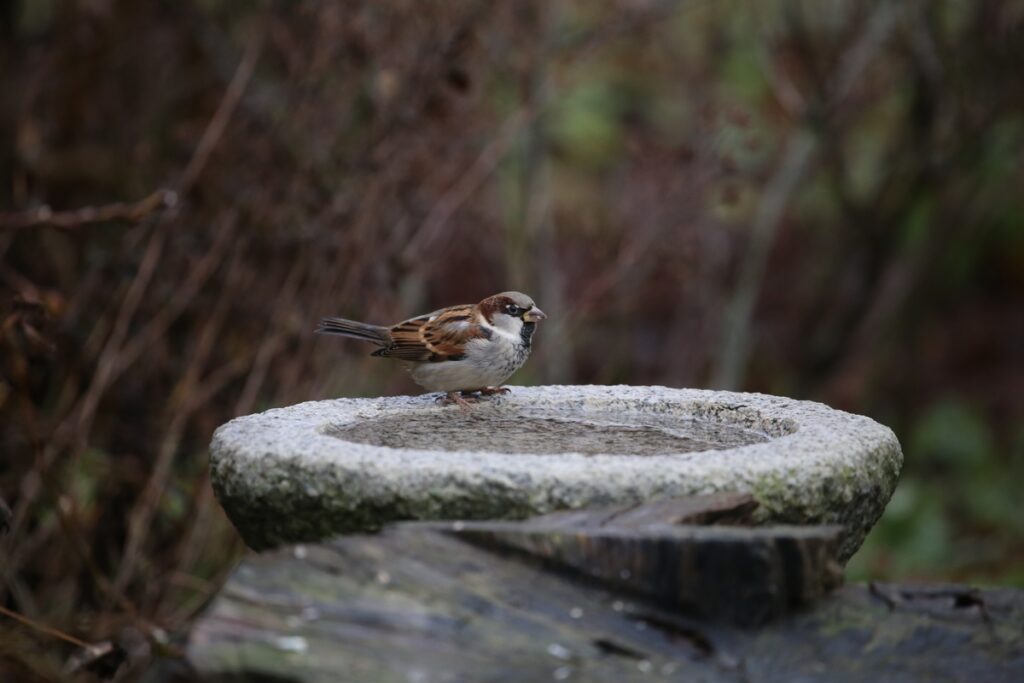
If you want a variety of birds in your yard, consider putting out a water dish. Make sure it’s wide and shallow for birds to drink and get out of safely. Especially in the scorching summer, a simple water feature helps birds survive in even the most urban environments.
For example, you could attract house finches, lesser goldfinches, mourning doves, Northern mockingbirds, American robins, and more.
To make the birds feel safer from predators, consider placing the dish half-under a bush or other sheltered area. You can also add little rocks to the water dish for depth and to make it safe for bees and butterflies to drink from.
#GetinMotion to Help Our Native Pollinators and Birds!
Here in the Mojave Desert, a little water goes a long way. Whether that’s putting out a water dish or watering a native plant once a week, there are different ways that we can make the best use of our water.
For more resources like plant lists, garden examples, and more, visit Red Rock Audubon Society’s native plants page and consider turning your garden or patio into a desert oasis for birds and pollinators today!
Stay tuned for part two of this piece to learn more about the local efforts to make native plants more accessible for purchase!
Thank you to our Patreon ‘Cultivator’ supporters who help make content like this possible!
The following Patron(s) supported the production of this article: Crystal Gropp.


